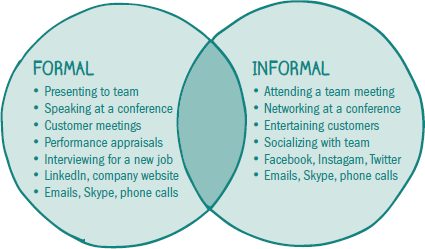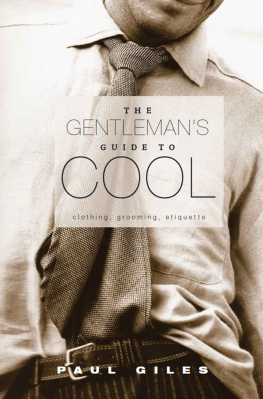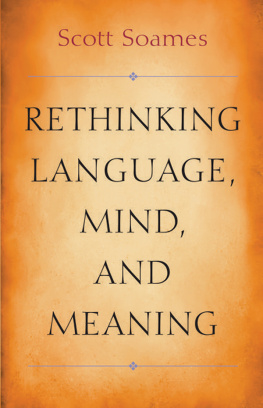Table of Contents
Guide
PRAISE FOR
THE PRESENTING BOOK
How you present yourself to the world, communicate your ideas and differentiate yourself from others will ultimately determine your success in life. This book urges all of us to take inspiration from how big brands are managed and apply these branding techniques to brand you so you can shine a spotlight on your key strengths and carve a niche that differentiates you from your peers.
Ivor Burns
Head of Marketing Strategy & Activation, Camelot
Nicole Soames clearly shows that when it comes to presenting, less is generally more. This book is packed with practical steps to help you banish any nerves and deliver a confident and polished performance that captures and holds your audiences attention.
Jaana Tuominen
CEO, Fiskars Group
Unlike most other books on presenting, The Presenting Book doesnt only focus on how to give big formal presentations. Instead, it reminds us that the secret to success is consistently presenting the best version of ourselves in every day, informal situations.
Ho-Yan Yap
Head of Recruitment and European Training and Development, Lazard
Im a big believer that you need to grasp every opportunity to differentiate yourself and stand out from the crowd. Nicoles practical, step-by-step approach will help you achieve this so that you make a great impression, whatever the situation.
Bruce Alexander
Managing Director, Montezumas Chocolates
A fresh and easy-to-apply approach to presenting, including invaluable tips on how to make a great impression in the virtual world whether its via webinars, video-conferencing or social media.
Duncan Macdonald
Chief Information Officer, UPC & Liberty Global Shared Platforms
An inspiring and practical guide highlighting the crucial role EQ plays in taking your presenting skills to the next level so that you make a great impression at each and every touchpoint.
Fabio Pellegrino
Director CIO Technical Delivery, UPC Switzerland
An indispensable guide for anyone who wants to make a great impression. Nicole Soames helps unlock your presenting confidence by showing you how to hone what you say and how you say it. Taking her advice on board will help you walk the talk and truly own the room.
Mark Thorpe
CEO and Managing Director Operations, KP Snacks
THE
PRESENTING
BOOK
PRACTICAL STEPS ON HOW TO
MAKE A GREAT IMPRESSION
NICOLE SOAMES

FOR OTHER TITLES
IN THE SERIES...

CLEVER CONTENT, DYNAMIC IDEAS, PRACTICAL
SOLUTIONS AND ENGAGING VISUALS
A CATALYST TO INSPIRE NEW WAYS OF THINKING
AND PROBLEM-SOLVING IN A COMPLEX WORLD
conciseadvicelab.com
CONTENTS

INTRODUCTION
1.MAKING A GREAT IMPRESSION
Given todays unprecedented levels of uncertainty and change, where everyone is bombarded with a non-stop flow of digital information, the ability to cut thorough the noise and make a memorable impression has never been more important. As you constantly compete for peoples time and attention, how you present yourself to the world and communicate what you can bring to the table, either in person or virtually, is the key to standing out from the crowd.
First impressions really do count. Like it or not, human beings are hardwired to make snap judgements. The human brain instinctively categorizes people to help us make sense of the world. This unconscious bias can be based on appearance, age, gender, skin colour and social status, to name but a few. You, therefore, need to take active steps to manage this bias by controlling the controllables your tone of voice, body language and spoken word in order to present your unique combination of skills, expertise and personality in the best possible light. After all, as the saying goes, you never get a second chance to make a great first impression.
Think about someone in your own life who has made a lasting impression on you it could be a public figure, a friend, a client or a boss. Remember how they make you feel when you are with them. Do they inspire trust? Are they confident and credible? Do you enjoy spending time with them? Now think about how you can bottle this feeling. This is the gold dust that enables you to differentiate yourself from those around you. Dont fall into the trap of presuming these people are natural presenters or born with charisma. It takes hard work and commitment to present the best version of yourself. No one is the finished article. As with learning any new skill, there are practical steps you can take to put your best foot forward and present yourself clearly and confidently.
While its crucial to make an impact when you first present yourself to someone, its equally important to build credibility and trust over time by presenting yourself in a consistent manner. If, for example, the first time you meet a customer you go out of your way to make a connection and have a meaningful conversation, but in subsequent meetings you appear distracted and ill-prepared, your credibility is immediately eroded. Inconsistencies in behaviour can undermine trust as the other person will quickly conclude that you are not what you appear. Bear in mind these wise words from CEO Warren Buffet: It takes 20 years to build a reputation and five minutes to ruin it. If you think about that, youll do things differently. Throughout this book, we will look at presentation best practice and apply this to the everyday, so that you can learn how to do things differently and present the best version of yourself each and every time you interact with someone.
2.PRESENTING YOURSELF FORMALLY AND INFORMALLY
In my experience, you are more likely to devote extra time and effort to how you present yourself when you are preparing for those big moments in your professional life such as a job interview, a pitch to a new client or giving a keynote speech at a conference. These are formal scenarios where the stakes are high and there is pressure to perform to the best of your ability. Where you generally let yourself down is in your informal, day-to-day life. Im sure all of us are guilty at one time or another of putting less effort into how we come across in team meetings, at networking events, or via email or social media. Successful people, on the other hand, understand that they need to consciously make a great impression at every touchpoint they have with other people.
The secret is to flex your presenting style according to the particular situation you are in.
On the following page is a diagram that highlights the various formal and informal presenting situations people typically experience as part of their day-to-day lives:



















